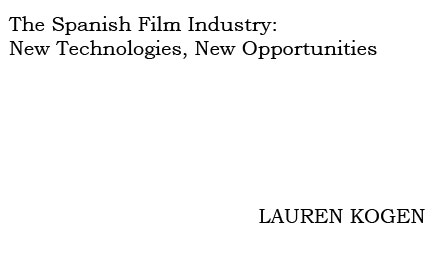

In the case of digital projection, digitally produced films or films with digital masters would no longer have to be converted to celluloid film reels. Instead, the distributor would send the digital film file to the theatre via satellite transmissions, fiber optic or broadband networks, DVD-ROMS, hard drives or digital tapes. This saves the cost of the film copies, which typically run to about US$1,500 each, and that of shipping the heavy films reel cans. Furthermore, for the films that are lucky enough to gain international distribution, different language tracks or subtitles can potentially be stored on the same master.32
Digital exhibition, other than allowing for digital distribution, offers the most interesting opportunities of all the steps in the digital chain. Just as there are different digital cameras, there are also various types of digital projectors, and exhibitors can buy a projector commensurate with their budget. Digital screenings have therefore been divided into two broad categories: D-Cinema (Digital Cinema) and E-Cinema (Electronic Cinema). D-Cinema refers to the use of the highest-end or ‘cinema-quality' projectors, to screen most first-run film releases. Currently, all commercially available D-Cinema projectors are based on the Digital Light Processing (DLP) technology developed by Texas Instruments, and cost up to US$150,000 each. Other systems in development, such as the D-ILA technology from JVC or Sony's new SXRD chip technology, will hopefully increase competition and lower costs.
E-Cinema refers to the new and expanding market for alternative types of screenings. These use lower-end projectors, often with resolutions equivalent to that of High Definition Television (HDTV). Examples of screenings for these types of projectors are music concerts, sports matches, stage performances, television series, business rental, and certain types of films. Because of the inferior quality, however, they are not meant for typical first run releases.
So far in Spain very few E-cinema screenings have taken place, but of those that have, some have been quite successful. In one event co-sponsored by Telefónica (the country's major telephony company), Thomson (an electronics manufacturer), Cinesa/UCI theatres, and the Liceu Opera House in Barcelona , the opera La Traviatta was screened live at Barcelona 's Cinesa Diagonal Theatre. The image was delivered through fibre-optic lines installed solely for the occasion, running from the Liceu to the theatre. The event was popular enough for Ricardo Gil, the Marketing Director of the Cinesa/UCI theatres (who are owned by Paramount/Universal) to say they will continue such events when the technology becomes more readily available. At the time, there were no digital TV cameras in Spain and a unit had to be rented from Belgium in order to stage the event, at a cost too high to be borne solely by one theatre and for local broadcasting only. However, he believes that the audience exists for these types of screenings and is willing to pay the €25 to €30 that would be required to make such a one-time event profitable. Gil feels the alternative venue attracts a different kind of audience: ‘It was strange to see some of the younger people in the audience wearing jeans and eating popcorn. It's a much more casual environment'.33 And while the relaxed atmosphere draws a non-typical opera-goer, it appeals at the same time to more avid fans, who can see the singers up close without having front-row seats.
Advertising is another avenue of income. By being able to screen digital pre-show adverts across an electronically connected chain of theatres exhibitors can gain a wider reach of potential advertisers. Regal Cinema, an American theatre chain owner, has been a pioneer in this field. Its ‘Cinemedia' digital network was the first large-scale, nationwide digital projection system in the country, and they are already reaping the benefits of the experiment. The chain has had moderate success with alternative screenings, but has found the greatest profits to come from advertising, with revenue increasing in this area by 236 per cent between 2002 and 2003.34 Cliff Marks, the president of Marketing and Sales, asserts that ‘Advertisers and marketers from all realms and all walks of life have been very open to partner with us. … There's a whole host of new companies that are finding cinemas as a great alternative for sight, sound and motion advertising.'35 By being able to package together 20 minutes of pre-show adverts and distribute them via satellite to a wide number of theatres, reliability is increased and distribution costs are decreased, as are the labor costs of splicing together celluloid reels for each theatre. Additionally, theatres equipped with lower-end projectors can be rented out for business presentations, satellite conferences, or educational screenings, thus allowing the theatre to take advantage of the conventional nine-to-five working day, when admissions are generally low.


